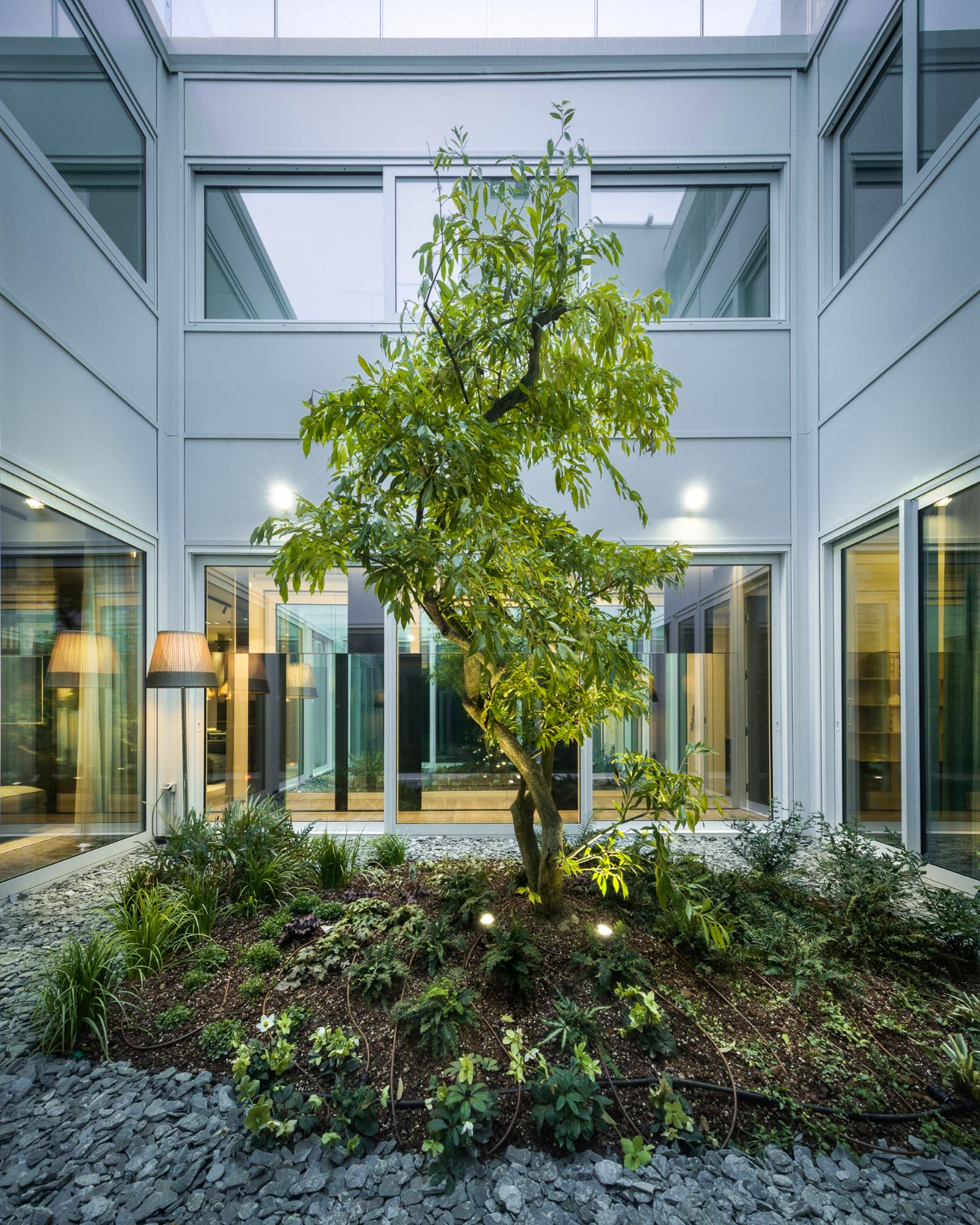High Degree of Product Circularity
Sustainability
High Degree of Product Circularity
Product circularity certification forms part of an ongoing strategy of improvement on the part of Ernestomeda, which has always been sensitive to environmental issues and has a long-standing commitment to reducing its footprint on our planet.

To be defined as truly efficient, a production process must be able to optimise the product’s functions, guarantee its circularity and reduce its environmental impact, by ensuring that the resources used in the process will subsequently be made available for reuse.
Ernestomeda is one of Italy’s first fitted kitchen manufacturers to obtain Product Circularity Certification, issued by notified body Cosmob, which has published its own operating regulations “Cosmob Qualitas Praemium – Valutazione della Circolarità del prodotto”, an invaluable auditing tool in accordance with the UNI EN ISO 14021 standard.

Product circularity is assessed through the measurement (balance of matter) of the resources used for the manufacture of an eco-sustainable product.
In Ernestomeda’s case, this involved testing of all its furnishings, in the various structure and finish variants, and specifically of units with veneered, laminate, lacquered and glass doors, and the different components.

The tests consider a series of indicators that provide an overview of the type of input materials and the destination of the output materials.

The circularity measurement performed and certified by Cosmob on Ernestomeda products yielded excellent results, with up to 99% reuse.
The results are illustrated in the graphs below:
The results are illustrated in the graphs below:
Glass
Veneer
Lacquered
Melamine and laminate
59%
Renewable source
material that can regenerate over time
59%
Renewable source
material that can regenerate over time
49%
Virgin
material with no recycled content
49%
Virgin
material with no recycled content
48%
Recycled
material which has pre and post-consumer recycled content
48%
Recycled
material which has pre and post-consumer recycled content
3%
Permanent material
material which can be recycled infinite times without losing any of its original properties (upcycling)
3%
Permanent material
material which can be recycled infinite times without losing any of its original properties (upcycling)
98%
Recycle
material destined for recycling processes
98%
Recycle
material destined for recycling processes
2%
Energy recovery
material used as an alternative to traditional energy sources to produce electricity and heat
2%
Energy recovery
material used as an alternative to traditional energy sources to produce electricity and heat
0%
Landfill
material sent for landfill disposal
0%
Landfill
material sent for landfill disposal
99
Product
circularity
circularity

89%
Renewable source
material that can regenerate over time
89%
Renewable source
material that can regenerate over time
56%
Virgin
material with no recycled content
56%
Virgin
material with no recycled content
44%
Recycled
material which has pre and post-consumer recycled content
44%
Recycled
material which has pre and post-consumer recycled content
0%
Permanent material
material which can be recycled infinite times without losing any of its original properties (upcycling)
0%
Permanent material
material which can be recycled infinite times without losing any of its original properties (upcycling)
97%
Recycle
material destined for recycling processes
97%
Recycle
material destined for recycling processes
2%
Energy recovery
material used as an alternative to traditional energy sources to produce electricity and heat
2%
Energy recovery
material used as an alternative to traditional energy sources to produce electricity and heat
1%
Landfill
material sent for landfill disposal
1%
Landfill
material sent for landfill disposal
98
Product
circularity
circularity

89%
Renewable source
material that can regenerate over time
89%
Renewable source
material that can regenerate over time
38%
Virgin
material with no recycled content
38%
Virgin
material with no recycled content
62%
Recycled
material which has pre and post-consumer recycled content
62%
Recycled
material which has pre and post-consumer recycled content
0%
Permanent material
material which can be recycled infinite times without losing any of its original properties (upcycling)
0%
Permanent material
material which can be recycled infinite times without losing any of its original properties (upcycling)
98%
Recycle
material destined for recycling processes
98%
Recycle
material destined for recycling processes
2%
Energy recovery
material used as an alternative to traditional energy sources to produce electricity and heat
2%
Energy recovery
material used as an alternative to traditional energy sources to produce electricity and heat
0%
Landfill
material sent for landfill disposal
0%
Landfill
material sent for landfill disposal
99
Product
circularity
circularity

88%
Renewable source
material that can regenerate over time
88%
Renewable source
material that can regenerate over time
25%
Virgin
material with no recycled content
25%
Virgin
material with no recycled content
75%
Recycled
material which has pre and post-consumer recycled content
0%
Permanent material
material which can be recycled infinite times without losing any of its original properties (upcycling)
0%
Permanent material
material which can be recycled infinite times without losing any of its original properties (upcycling)
97%
Recycle
material destined for recycling processes
97%
Recycle
material destined for recycling processes
2%
Energy recovery
material used as an alternative to traditional energy sources to produce electricity and heat
2%
Energy recovery
material used as an alternative to traditional energy sources to produce electricity and heat
1%
Landfill
material sent for landfill disposal
1%
Landfill
material sent for landfill disposal
98
Product
circularity
circularity
